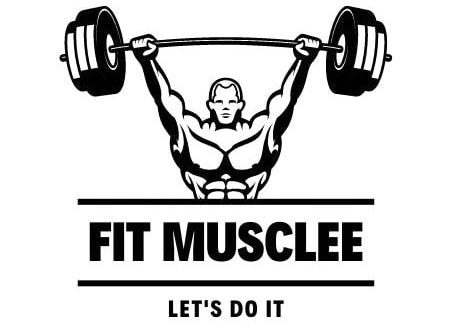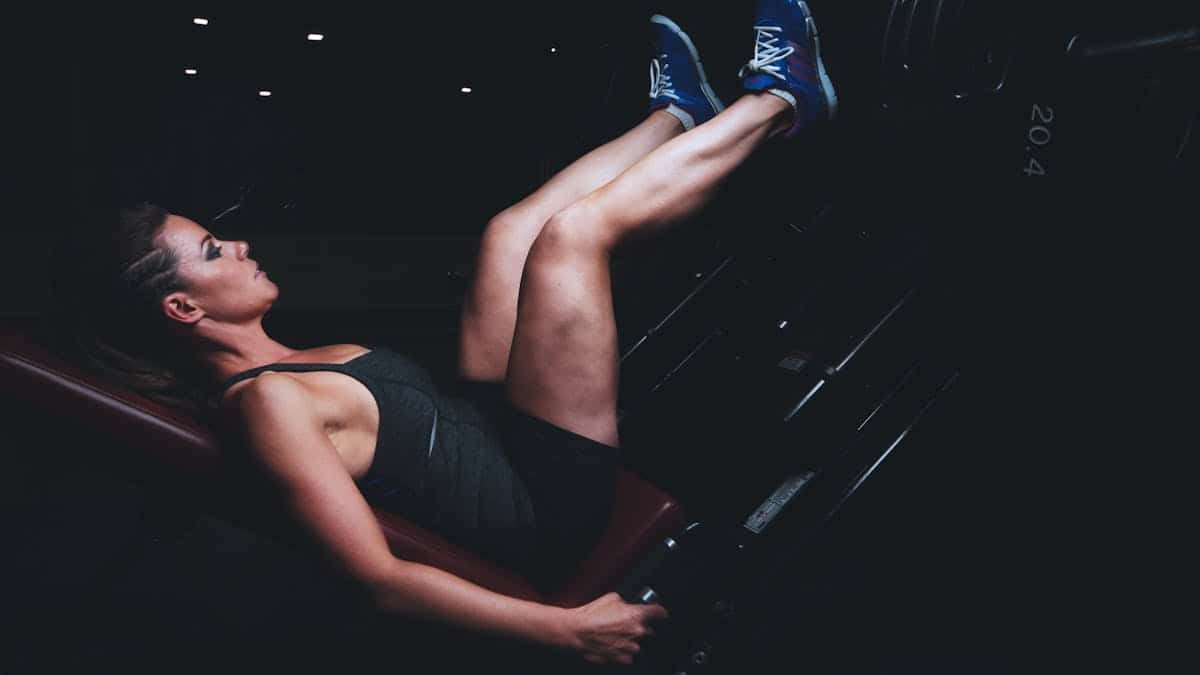Here is your complete guide to single leg press alternative.
Introduction to Single Leg Press Alternative
The single leg press is a popular exercise in strength training that targets the lower body, particularly the quadriceps, hamstrings, and glutes. While it offers numerous benefits, including improved muscle balance and increased strength, it may not be suitable for everyone. Whether due to equipment limitations, injury concerns, or personal preference, many individuals seek effective single leg press alternative to diversify their workouts.
In this article, we will explore the importance of finding alternatives to the single leg press. We will discuss various exercises that can effectively target similar muscle groups while offering unique benefits. By the end of this article, you will have a comprehensive understanding of various single leg press alternatives and how to incorporate them into your fitness routine.
Benefits of Single Leg Press Alternative
Muscle Imbalance Correction
One of the primary advantages of single leg press alternative is their ability to correct muscle imbalances. Many people have a dominant leg that is stronger than the other, which can lead to poor movement patterns and increased injury risk. Unilateral exercises help ensure both legs develop evenly.
Increased Core Engagement: Single Leg Press Alternative
Many lower body exercises require core stability and engagement. By incorporating single leg press alternative, you not only work your legs but also strengthen your core muscles. This dual benefit enhances overall functional strength.
Reduced Injury Risk
Using both legs simultaneously can sometimes lead to compensatory movements that increase the risk of injury. By focusing on one leg at a time with alternatives, you can reduce strain on your joints and improve your overall stability.
Functional Strength Development
Many single leg press alternatives mimic real-life movements, making them more functional. This means they can better prepare you for everyday activities like walking, running, and climbing stairs.
Top Single Leg Press Alternative: Bodyweight Exercises
1. Single-Leg Squats
Single-leg squats are a fantastic way to enhance strength and balance without any equipment.
- Description: Stand on one leg while extending the other leg forward. Lower your body into a squat while keeping your extended leg off the ground.
- Benefits: This exercise targets the quads, glutes, and hamstrings while improving balance.
- Common Mistakes:
- Allowing the knee to cave inward.
- Not lowering enough into the squat.
2. Lunges
Lunges are versatile exercises that can be performed in various directions.
- Variations:
- Forward Lunges: Step forward with one leg and lower your body until both knees are bent at about 90 degrees.
- Reverse Lunges: Step backward instead of forward.
- Lateral Lunges: Step out to the side.
- Benefits: Lunges engage multiple muscle groups and improve flexibility.
3. Step-Ups: Single Leg Press Alternative
Step-ups require minimal equipment and are excellent for building strength in the legs.
- Equipment Needed: A sturdy bench or step.
- Execution: Step up onto the bench with one foot, then bring the other foot up before stepping back down.
- Benefits: Targets quads and glutes effectively while enhancing balance.
4. Glute Bridges
Glute bridges focus on strengthening the posterior chain.
- Variations:
- Single-Leg Glute Bridges: Perform with one leg elevated.
- Elevated Glute Bridges: Place your feet on an elevated surface for a greater range of motion.
- Benefits: Excellent for targeting glutes and hamstrings.
Dumbbell Exercises for Single Leg Press Alternative
5. Dumbbell Bulgarian Split Squats
This exercise is great for building unilateral strength.
- Execution: Place one foot behind you on a bench or elevated surface while holding dumbbells at your sides. Lower your body until your front thigh is parallel to the ground.
- Benefits: Enhances balance and targets quads and glutes effectively.
6. Dumbbell Lunges
Dumbbell lunges add resistance to traditional lunges.
- Execution: Hold dumbbells at your sides while performing lunges in any direction.
- Benefits: Increases strength in addition to improving stability.
7. Goblet Squats
Goblet squats are a fantastic alternative that engages multiple muscle groups.
- Execution: Hold a dumbbell close to your chest with both hands while performing a squat.
- Benefits: Improves squat form while targeting quads and glutes.
Resistance Band Exercises: Single Leg Press Alternative
8. Resistance Band Single Leg Press
Resistance bands provide an excellent way to add resistance without heavy weights.
- Setup: Anchor a resistance band under one foot while seated or lying down.
- Execution: Press against the band with one leg while keeping the other elevated.
- Benefits: Targets quads and glutes effectively while being beginner-friendly.
Machine Alternatives
9. Hack Squat Machine
The hack squat machine mimics some benefits of the single leg press.
- Execution: Stand on the platform with your back against the pad and perform squats using the machine’s guidance.
- Benefits: Provides stability while targeting lower body muscles effectively.
10. Smith Machine Squats
Smith machines offer support for squatting movements.
- Execution: Position yourself under the barbell on a Smith machine and perform squats as you would with free weights.
- Benefits: Offers safety for those new to squatting or looking for controlled movement patterns.
Comparison Table of Single Leg Press Alternative
| Exercise | Equipment Needed | Primary Muscles Targeted | Difficulty Level |
|---|---|---|---|
| Single-Leg Squats | None | Quads, Glutes | Intermediate |
| Bulgarian Split Squats | Dumbbells | Quads, Hamstrings | Intermediate |
| Resistance Band Single Leg Press | Resistance Band | Quads, Glutes | Beginner |
| Hack Squat Machine | Machine | Quads, Hamstrings | Intermediate |
Common Mistakes to Avoid When Using Single Leg Press Alternative
When incorporating single leg press alternatives into your workout routine, it’s essential to perform these exercises correctly to maximize benefits and minimize the risk of injury. Below are some common mistakes to avoid, along with tips on how to ensure proper form and execution.
1. Poor Foot Placement
One of the most critical aspects of performing single leg exercises is foot placement. Incorrect positioning can lead to ineffective workouts and increase the risk of injury.
- Mistake: Allowing your heel to hang off the edge of the platform or bench.
- Solution: Ensure your entire foot is planted firmly on the surface. This helps distribute weight evenly and engages the appropriate muscles effectively.
2. Lowering Too Far
Many individuals tend to lower their body too far during single leg exercises, which can compromise form and lead to injuries.
- Mistake: Lowering the sled or body too far, causing your hips to round and your lower back to lift off the pad.
- Solution: Only lower until your thighs are parallel with the ground or slightly below, ensuring that your back remains in contact with the pad throughout the movement27.
3. Locking Out Knees
Locking out your knees at the top of the movement can take tension off the muscles and place undue stress on your joints.
- Mistake: Fully extending your knees at the top of the exercise.
- Solution: Stop just short of locking out your knees. Keep a slight bend in them to maintain tension in your muscles and protect your joints75.
4. Incorrect Body Alignment
Maintaining proper body alignment is crucial for effective workouts and injury prevention.
- Mistake: Allowing your knees to collapse inward during exercises.
- Solution: Focus on keeping your knees aligned with your toes throughout the movement. This helps activate the correct muscle groups and reduces strain on your knees26.
5. Insufficient Core Engagement
Neglecting core engagement can lead to poor stability and form during single leg exercises.
- Mistake: Failing to engage your core while performing single leg movements.
- Solution: Before starting any exercise, tighten your core muscles as if preparing for a punch. This helps stabilize your body and supports proper posture throughout the movement.
6. Using Excessive Weight
Using too much weight can compromise form and increase injury risk.
- Mistake: Attempting to lift heavy weights without mastering form first.
- Solution: Start with lighter weights or bodyweight until you feel comfortable with the movement pattern. Gradually increase resistance as you gain strength and confidence46.
7. Ignoring Warm-Up and Flexibility
Neglecting warm-up routines can lead to stiffness and decreased performance during workouts.
- Mistake: Skipping warm-up exercises before engaging in single leg movements.
- Solution: Always perform a dynamic warm-up focusing on leg mobility and flexibility. This prepares your muscles for activity and reduces injury risk.
Read Also: Best Protein Shakes for Swimmers.
FAQs about Single Leg Press Alternative
What are the benefits of single-leg exercises?
Single-leg exercises help improve balance, correct muscle imbalances, enhance core stability, and reduce injury risk by promoting proper movement patterns.
Read Also: High Protein Wraps Recipe.
How can I incorporate these alternatives into my routine?
You can integrate these exercises into your existing workout routine by replacing traditional bilateral movements with unilateral ones or adding them as supplementary exercises after main lifts.
Read Also: Alternatives to Preacher Curls.
Are single-leg exercises safe for beginners?
Yes! Many single-leg exercises can be modified for beginners by reducing range of motion or using support (like holding onto a wall) until they build confidence and strength.
Read Also: Alternative to Leg Press.
What should I do if I feel pain while performing these exercises?
If you experience pain during any exercise, stop immediately. Assess your form and consider consulting with a fitness professional or healthcare provider if pain persists.
Read Also: Zercher Squat vs Back Squat.
Conclusion
Incorporating single leg press alternatives into your workout routine can provide numerous benefits ranging from improved muscle balance to enhanced core stability. With various options available—from bodyweight movements like single-leg squats to resistance band exercises—there’s something for everyone at any fitness level.
Read Also: Foods That Increases Hemoglobin.
Experiment with these alternatives to discover what works best for you and enjoy a more balanced approach to lower body training! This article provides an engaging exploration of effective alternatives to the single leg press, ensuring readers understand their benefits and how to incorporate them into their routines seamlessly.
Read Also: Reverse Hack Squat Alternative.

